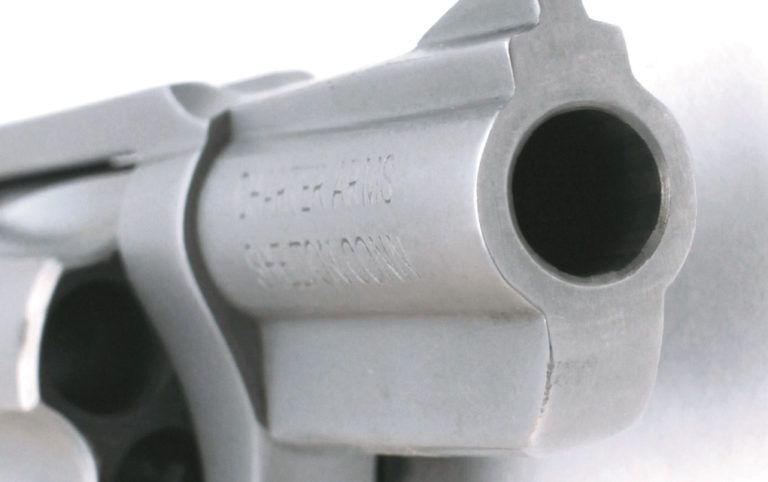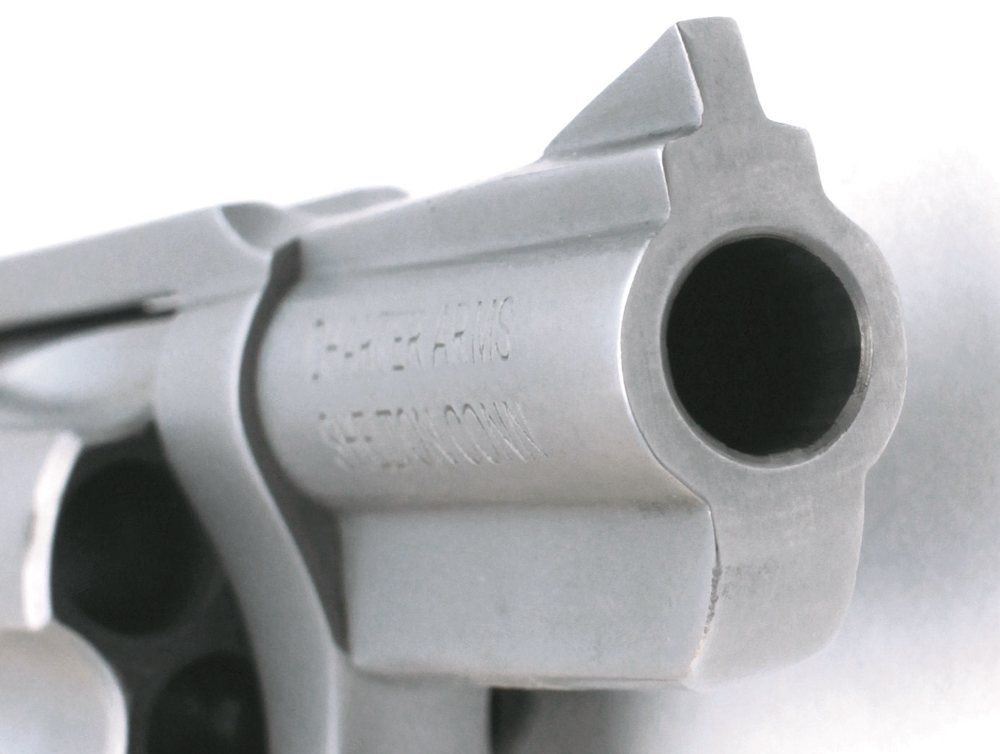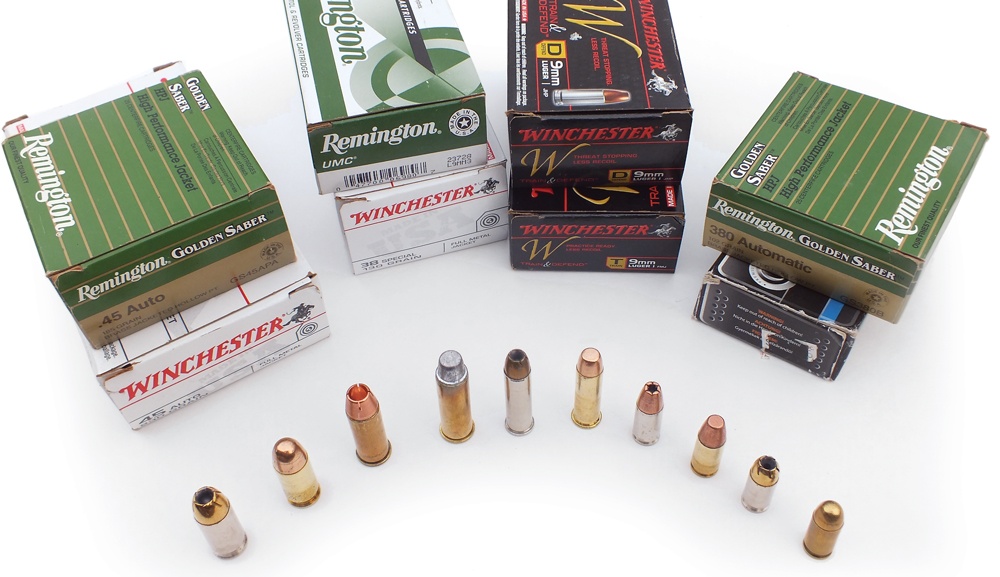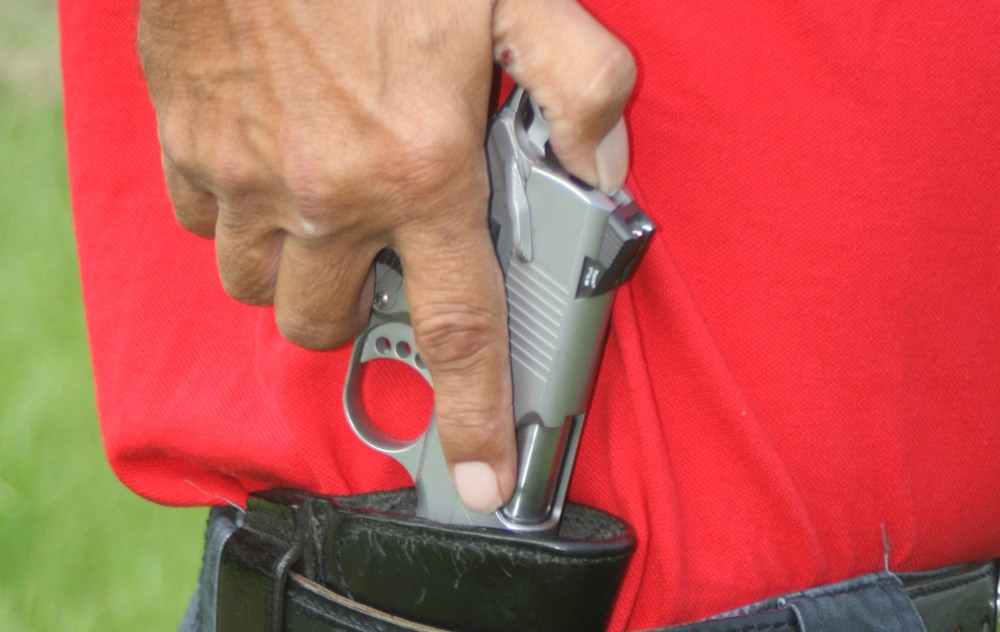

Getting a grasp on where an assailant must be shot to neutralize a threat and the power needed from a concealed carry handgun to do so goes a long way in making informed choices when going armed.

The object of carrying a firearm as a matter of daily routine is based on the conviction that you have the right to defend your life or the life of someone else. While it’s certainly true that the presence of a firearm can prevent violence from happening by discouraging a would-be assailant, the mere presence of the firearm isn’t always enough, and sometimes deadly force must be used.
When this decision has to be made, the object is to stop the aggressor quickly before he can harm you or someone else. Until technology develops Star Trek-style “phasers” that can be set to “stun,” this means imparting enough damage to the perpetrator to cause him to cease aggressive activity.
Some individuals cease aggression when confronted with a firearm. Some give up when shot, no matter how serious or trivial the wound.
Unfortunately, some aggressors don’t stop until they’re physically unable to continue.
When I was growing up, I got the impression that any time someone was shot, they simply froze and fell down, incapacitated. On television, Matt Dillon almost always shot the bad guy in the stomach and the bad guy would grasp the wound, look stunned and fall dead.
Sometimes the person who was shot would survive, but they almost always fell to the ground and became immobile. In later TV shows and movies, the gunshot victim would be thrown across the room or spin around as if hit by a baseball bat and fall. Apparently the modern prop guns are much more powerful than the ones Matt Dillon and The Rifleman, Lucas McCain, had access to.
The fact is that the only certain way to make the aggressor stop immediately is to disrupt the central nervous system.
A shot to the brain stem will cause instant incapacitation because it interrupts the ability to breathe and control voluntary movement. A shot that severs the spinal cord above the base of the neck will prevent voluntary movement of the arms and legs.
While a shot fired to any other part of the body other than the central nervous system can cause the assailant to cease aggression, there’s no certainty that it will.

Loss of blood will also incapacitate an assailant, but the result will not be instant. The body contains about five liters of blood, and a person must lose about two liters before losing consciousness.
Severing the aorta will cause the assailant to bleed out in the shortest possible time, but will still allow voluntary action for at least five seconds. Any deer hunter can tell you a heart-shot deer can run a hundred yards.
An aggressor with his heart shot out can still have time to kill you and others in your family. Wounds to major arteries can cause death, but it won’t be instant.
Having said this, a high percentage of humans cease aggression after receiving a single gunshot, even if it’s not a fatal wound. The cessation of aggression isn’t because the body is incapable, but because the mental and physical shock of the gunshot effectively takes the fight out of the aggressor.
Individuals with their systems pumped full of adrenalin or drugs are much less likely to give up when dealt a lethal blow. The problem is you can’t count on the cessation of aggressive behavior after one shot.
The old argument was that high-velocity handgun rounds could produce hydrostatic shock that would affect neural function, effectively stopping the assailant instantly. The first mention of pressure waves and the human body that I could find in the scientific literature was presented by E. Harvey Newton and his research group at Princeton University in 1947.
Under the theory of hydrostatic shock, a high velocity bullet created hydraulic shock waves in the body, and these shock waves did collateral damage to organs not directly contacted by the wound channel.
While the concept of hydrostatic shock is generally accepted, there are detractors. My personal opinion, based on multiple post-mortems of whitetail deer and feral pigs, supports hydrostatic shock as a factor, but the example of the deer who runs off after his heart has been turned to jelly illustrates that hydrostatic shock isn’t something that will always provide the stoppage of a drug-crazed assailant.

Compounding the problem for the concealed carry citizen is the fact that few handguns suitable for daily carry produce enough velocity to produce the level of hydrostatic shock the experts agree will sufficiently and consistently cause enough neural disruption to produce hydrostatic shock, much less instantly stop an assailant.
Studies show some evidence that hydrostatic shock does produce results, but not consistently enough to count on. With sufficient penetration, there can be neural effects from gunshot wounds from handguns, but there’s no certainty of instant stoppage, and instant stoppage is the desired effect.
The upshot of all this is there’s simply no way to instantly stop an assailant other than hitting the brain stem or spinal column. Even a shot to the lobes of the brain doesn’t always produce an instant or even fatal result.
Having said this, it would require skills very few possess to accurately place such a shot, much less do it under the stressful conditions of self-defense.
Faced with these facts, it becomes obvious that there’s no magic formula for instant incapacitation other than a feat of almost superhuman marksmanship. The brain stem or that tiny section of spinal cord is simply too small a target to be considered a good choice.
The military and law enforcement choose to put their emphasis on a less difficult target area, from the base of the neck across the chest down to the base of the sternum. Within this area are the heart and lungs as well as the spinal column.
Any shot from an adequately-powered firearm delivered in this area is likely to be lethal and also likely to deliver enough punch to take the fight out of all but the most determined attacker. About the same size as the A zone on most competitive shooting targets, this area is well within the capabilities of a practiced shooter at the distances where most civilian defense situations occur.
While most vulnerable organs are centrally located in an area large enough for an accurate shot to find them, they’re fairly well protected by the skeletal system. For a straight-on shot, the sternum protects the spinal column and much of the heart, which also happens to be the best target.
Like much of creation, the human body is well-designed to protect the most vital areas. Certainly, there are many handgun calibers capable of penetrating the sternum, but the sternum is capable of protecting vital organs against smaller, less effective calibers.

According to military studies, the third-most-likely target to disable an assailant is the pelvic girdle or the hips. Breaking a hip will certainly prevent your enemy from walking, but it won’t stop him from using a firearm. For that reason and because the likelihood the shot won’t actually stop the bad guy by breaking his hip, it’s suggested that targeting the pelvic area isn’t a good idea.
Almost anyone can manage a level of proficiency that will allow hitting the targeted chest area from normal defensive distances. In teaching the North Carolina Concealed Carry Certification, I’ve learned almost everyone can keep 90 percent of their shots in an 8-inch area at 7 yards.
Of course, this is shooting in good light conditions, with plenty of time, and under no stress other than the normal stress beginning shooters have when shooting for record for the first time in their lives.
In order to perform reasonably well under difficult conditions, most people need to be able to perform very well under optimum conditions. It’s not at all unusual for a police/criminal gunfight to involve several shots fired with no one getting hit, and police generally spend more time in training than civilians.
The best preparation for the armed citizen is to train enough to be confident and comfortable with their carry gun and choose a gun with reasonable stopping power while being small and light enough that it’ll be comfortable to carry every day.
To review all this, we know the only area that’s certain to instantly stop an assailant is too small to target under almost any imaginable set of circumstances. We also know the second choice is large enough for a person of average expertise to hit, but that area is fairly well protected by bone structure.
Based on this information, the well-prepared armed citizen should focus on carry and gun handling skills, marksmanship and carrying a firearm with enough power to penetrate the sternum. Under these circumstances, it’s reasonable to say the concealed carry citizen is properly prepared.
Editor's Note: This article is an excerpt from Gun Digest Guide to Concealed Carry Firearms.
Are you interested in carrying a handgun for self defense, but don’t know where to start? Perhaps you’re already an armed citizen and are looking for a new carry choice? Let the Gun Digest Guide to Concealed Carry Firearms be your complete guide to the fast-growing world of concealed carry handguns. With practical, real-world advice and insight from an author with decades of experience, this guide can help you make the best possible choice for a concealed carry handgun. Get Your Copy Now

![Best Concealed Carry Guns In 2025 [Field Tested] Wilson Combat EDC X9S 1](https://gundigest.com/wp-content/uploads/Wilson-Combat-EDC-X9S-1-324x160.jpg)


![Best 9mm Carbine: Affordable PCCs [Tested] Ruger Carbine Shooting](https://gundigest.com/wp-content/uploads/Ruger-Carbine-Shooting-100x70.jpg)
![Best AR-15: Top Options Available Today [Field Tested] Harrington and Richardson PSA XM177E2 feature](https://gundigest.com/wp-content/uploads/Harrington-and-Richardson-PSA-XM177E2-feature-100x70.jpg)
